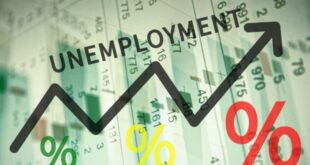California’s labor market withstood COVID-19 better than first believed, according to data released this month.
A lot better, in fact.
Originally, job growth in the state between December 2020 and December 2021 was believed to have increased by 6.5 percent compared with the previous.12 months, according to Beacon Economics in Los Angeles.
However, when the U.S. Bureau of Labor Statistics – which provides all of the data for Beacon’s statewide jobs reports – took a second look at that figure this month, that number was changed to 7.7 percent, said Taner Osman, Beacon’s research manager.
That means California added 197,000 jobs during the worst of the pandemic – when much of the state’s economy had either slowed to a crawl or been shut down -, not the paltry 70,000 jobs originally estimated.
“The revisions have painted a rosier picture of California’s labor market recovery than previous estimates suggested,” Osman said in a statement when the updated data was released. “Given the contraction in the state’s labor force since the start of the pandemic, the job growth that has occurred is partly due to an expansion in labor force participation.”
California also bounced back from the pandemic quicker than originally thought: the nearly 2.8 million jobs that were lost due to COVID-19 were recovered not by October of last year, but by June, according to the revised data.
Also, payrolls statewide are 1.1 percent above their pre-pandemic peak, not the original estimate of 0.4 percent.
Not all of the revisions were positive, however.
California’s job growth from December 2021 to December 2022 was revised down by one-half of a percentage point, from 3.6 percent to 3.1 percent. While worth noting, that revision doesn’t change the nature of the state’s solid employment recovery.
“A lot of people thought we had a mild recovery, but now that we’ve done the revisions it doesn’t look so mild,” Osman said in a telephone interview. “It was at least an average recovery, not a below-average recovery, which is what it looked like originally.”
The benchmark revision was mixed, with growth rates in some sectors moving up and others moving down.
Among the largest upward revisions in year-over-year growth rates between December 2021 and last December were real estate (2.8 percent to 3.2 percent), healthcare (4.7 percent to five percent), and professional, scientific, and technical services (from 4.1 percent to 4.2 percent).
The biggest downward revisions year-over-year included construction (4.6 percent to 2.7 percent), government (1.8 percent to 0.4 percent), transportation, warehousing, and utilities ( 3.8 percent to 2.9 percent), education (7 percent to 6.4 percent, retail ( 0.8 percent to 0.2 percent ), and leisure and hospitality ( 7.7 percent to 7.2 percent).
The bureau routinely conducts “benchmark reviews” of its data a year or two after it’s first published, and those reviews produce changes, although not normally on the scale of the recent post-pandemic data.
“It makes you feel better about how California is doing in its jobs recovery compared with other states,” Osman said. “Texas, for example, recovered 700,000 jobs, and California didn’t look very good compared with that, but now we don’t look so bad. We’re in a lot better shape than we thought we were.
“It also puts us more in line with the national recovery.”
In July, 528,000 non-agricultural jobs were added to U.S. payrolls. At that point, all of the jobs lost during the pandemic had been replaced, according to the bureau.
That recovery took 29 months, nearly three times as fast as it took to recover from the Great Recession of 2008-’09, businessinsider.com reported.
Also in July, the national unemployment rate was 3.5 percent, exactly where it was in February 2020, the month before the pandemic took hold in the United States and immediately eliminated millions of jobs.
The national unemployment rate peaked in April 2020 when it hit 14.8 percent.
One factor that helped the recovery, both nationwide and in California, was that the recession predicted by so many economists and the media didn’t happen.
But determining a more accurate assessment of the state’s labor market recovery involves several factors, according to Osman.
A business might have shut down – or reopened – not long after the survey was conducted. This was particularly true in the case of COVID-19 when a lot of businesses shut down and then came back, Osman said.
Also, the pandemic led to a lot of people working out of their houses, which made them harder to identify when the surveys were conducted.
“A lot of the surveys are done by telephone during the daytime, but during the pandemic, the normal [living] patterns changed,” Osman said. “[The surveyors] would get a different mix of people in the house than they normally would, and that was one thing that made it more difficult to get accurate information.”
That the economy bounced back from the pandemic isn’t surprising, but in at least one way that recovery is ongoing, said Jay Prag, professor of economics at the Drucker School of Management at Claremont Graduate University.
“We need to find out how many businesses that closed during the pandemic, especially restaurants, will ultimately reopen,” Prag said. “When we know that we’ll know whether we really have a full recovery.”
In the meantime, the benchmark revisions probably should be considered definitive.
“You could look at them again, but I don’t think they would change that much,” Osman said.
 IE Business Daily Business news for the Inland Empire.
IE Business Daily Business news for the Inland Empire.


